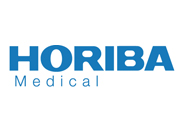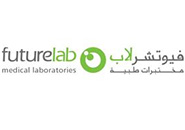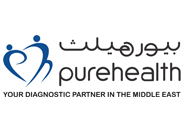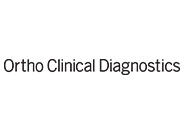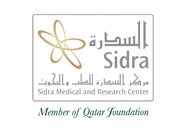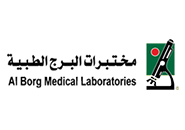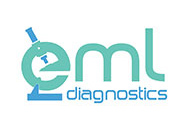Stuff We Should Not Be Doing: A look at better ways to determine the appropriate tests to offer and also how to best minimise errors
By Robert L. Sautter, PhD HCLD/CC (ABB), Principle of RL Sautter Consulting LLC, Lancaster, South Carolina, and Kevin C. Hazen, Ph.D., D(ABMM), FAAM, FIDSA, Director of Clinical Microbiology and Professor of Pathology, Section Head of Bacteriology, Mycobacteriology and Molecular Microbiology, Duke University, Durham, North Carolina, U.S.
Laboratory testing is dependent upon preanalytical, analytical and postanalytical test phases. In the laboratory, we are focused upon the analytical phase and often ignore the preanalytical and postanalytical portion of testing. This is a drastic error, even though both the pre and post phases are more difficult to control, they account for many errors, and for delays in caregivers reacting to test results. Seventy per cent of laboratory errors are associated with pre-analytical errors. Much work has been done to speed the results of laboratory testing in the analytical phase, however if the results are not available to care givers soon after they are posted in the laboratory information system, then the effort expended to speed the testing will be wasted. When possible, electronic results sent directly to the caregiver will aid in care, i.e. TheraDoc system. Also, if test results can be in the medical record when the caregiver can review them or rounds with patients, it will speed appropriate care.
Over the years, we have often offered testing and methodologies that can be described as “we have always done it that way”. The use of evidenced based medicine should replace that approach so that providers test the appropriate patient, use the best method to diagnose disease and also treat patients appropriately. Microbiologists, infectious disease physicians and pharmacists have recently been engaged in antibiotic stewardship programmes to better use appropriate antimicrobials to treat patients and not to use them on patients that do not need them. By doing so, a significant cost savings will be seen as well as better outcomes for patients. Too often laboratory medical and administrative staff make decisions in a void without using expertise from other disciplines. The use of multidisciplinary teams and diagnostic management teams offer a great advantage in treating patients and offering relevant laboratory testing.
In addition to some practices mentioned above, here is a look at some of the “stuff we should not be doing”.
Examples:
1. Accepting samples that are not appropriate for testing either due to poor collection, storage, or from unapproved sources without proper validation studies.
2. Adding newer methodologies without addressing with affected medical professionals preanalytical specimen collection errors and other pre-analytical steps.
3. Shipping samples many hours to the main laboratory if processing, testing or screening can be done locally. If they cannot be done in the laboratory, then in the point of care.
4. Adding new methodologies or procedures without discussing them with a multidisciplinary team including: Infectious disease, the physician specialty affected by the change and administration (i.e., the post-analytical impact of a new test).
5. Agreeing to perform AST on drug-bug combinations for which there are no standards.
6. Other “do not do” items will be discussed.
Antibiotic Stewardship and the Laboratory
The laboratory has played a key role in dispensing antimicrobial results as well as interpretation for clinicians, nurses and pharmacists. The explosion of antibiotic stewardship has occurred in the last few years with increasing full-time equivalents (FTE) as well as increasing budgets in pharmacy, infectious disease and nursing. However, since the Joint Commission issued a new standard for antimicrobial stewardship programmes in hospitals, critical access hospitals, and nursing care centres, the laboratory has been excluded from the “table”. The members of the team as mentioned in the standard are an infectious disease physician, pharmacist, practitioners and infection preventionists. For several of the members of the team, “if available in the setting,” are to be included. The laboratory, and in particular the microbiology laboratory, is excluded from the required active members. Ideally a doctoral level microbiologist should be on the team as is recognised by the Centers for Disease Control and Prevention (CDC). Although the Joint Commission states that they mimic the requirements for the team published by CDC, however, a member of microbiology laboratory or the diagnostic laboratory in general is not mentioned as key members of their stewardship team.
Laboratory Stewardship
Over the last 30 years an explosion in the cost of healthcare has occurred, and the laboratory is not exempt to this issue. In fact, an estimated four to five billion laboratory tests are performed annually with 30 per cent of them being unnecessary. The clinical microbiology laboratory is to provide appropriate tests to aid in diagnosis and therapeutic management of a patient with an infectious disease. Evidence-based approaches are key to this success as well as using a multidisciplinary team and also diagnostic management teams to treat patients. The clinical microbiologist should not only be dispensing test results but also should be key in determining which tests are useful in a patient scenario along with other caregivers. Many of the tests that could be ordered are not pertinent to the disease but rather simply just “ordered by habit”. Stewardship programmes rely on the clinical microbiology laboratory to direct actions needed for effective stewardship activities.
Examples of those contributions to stewardship are: 1. preanalytical, analytical and postanalytical test phases all influence the value of a test result; 2. Rapid result reporting can be an extremely important parameter for care as it can lead to effective interventions; 3. Guidance in selection of tests and interpretive assistance of the results; 4. Implementation of the most currently effective testing modalities and interpretation of the results; reporting appropriate antibiotics associated with positive outcomes for the patient; 5. Detection of antibiotic resistance begins in the Clinical Microbiology laboratory.
By working with other healthcare specialties, the microbiologist can serve as a valuable resource to the healthcare system.
The clinical microbiologist plays an important role in antibiotic stewardship and contributes to the antibiotic and laboratory stewardship teams in many ways, some of which are detailed above. They should be part of hospital, state, regional and federal expert panels to come up with guidelines on all areas of microbiology, as demonstrated in North Carolina’s CRE guidance. To that point, clinical microbiology should be represented on all committees discussing antibiotic resistance and stewardship and infection control, so the clinical microbiologist can describe how they can help.











